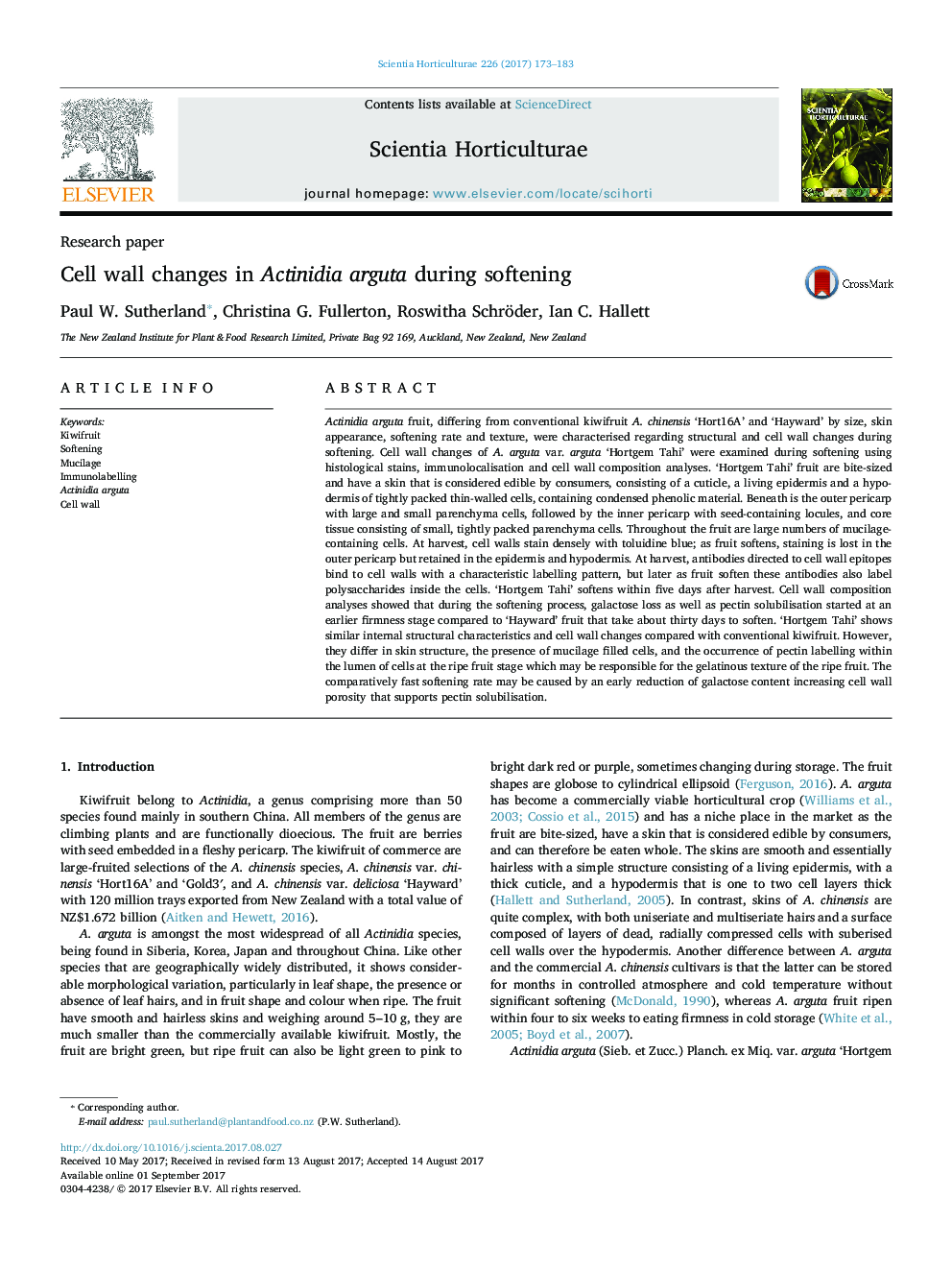| کد مقاله | کد نشریه | سال انتشار | مقاله انگلیسی | نسخه تمام متن |
|---|---|---|---|---|
| 5769357 | 1628772 | 2017 | 11 صفحه PDF | دانلود رایگان |

- We characterise cell wall changes in Actinidia arguta fruit during softening.
- Softening is associated with rapid loss of cell wall staining.
- Pectic polymers accumulate in cell lumen and intercellular space in ripe fruit.
Actinidia arguta fruit, differing from conventional kiwifruit A. chinensis 'Hort16A' and 'Hayward' by size, skin appearance, softening rate and texture, were characterised regarding structural and cell wall changes during softening. Cell wall changes of A. arguta var. arguta 'Hortgem Tahi' were examined during softening using histological stains, immunolocalisation and cell wall composition analyses. 'Hortgem Tahi' fruit are bite-sized and have a skin that is considered edible by consumers, consisting of a cuticle, a living epidermis and a hypodermis of tightly packed thin-walled cells, containing condensed phenolic material. Beneath is the outer pericarp with large and small parenchyma cells, followed by the inner pericarp with seed-containing locules, and core tissue consisting of small, tightly packed parenchyma cells. Throughout the fruit are large numbers of mucilage-containing cells. At harvest, cell walls stain densely with toluidine blue; as fruit softens, staining is lost in the outer pericarp but retained in the epidermis and hypodermis. At harvest, antibodies directed to cell wall epitopes bind to cell walls with a characteristic labelling pattern, but later as fruit soften these antibodies also label polysaccharides inside the cells. 'Hortgem Tahi' softens within five days after harvest. Cell wall composition analyses showed that during the softening process, galactose loss as well as pectin solubilisation started at an earlier firmness stage compared to 'Hayward' fruit that take about thirty days to soften. 'Hortgem Tahi' shows similar internal structural characteristics and cell wall changes compared with conventional kiwifruit. However, they differ in skin structure, the presence of mucilage filled cells, and the occurrence of pectin labelling within the lumen of cells at the ripe fruit stage which may be responsible for the gelatinous texture of the ripe fruit. The comparatively fast softening rate may be caused by an early reduction of galactose content increasing cell wall porosity that supports pectin solubilisation.
Journal: Scientia Horticulturae - Volume 226, 19 December 2017, Pages 173-183